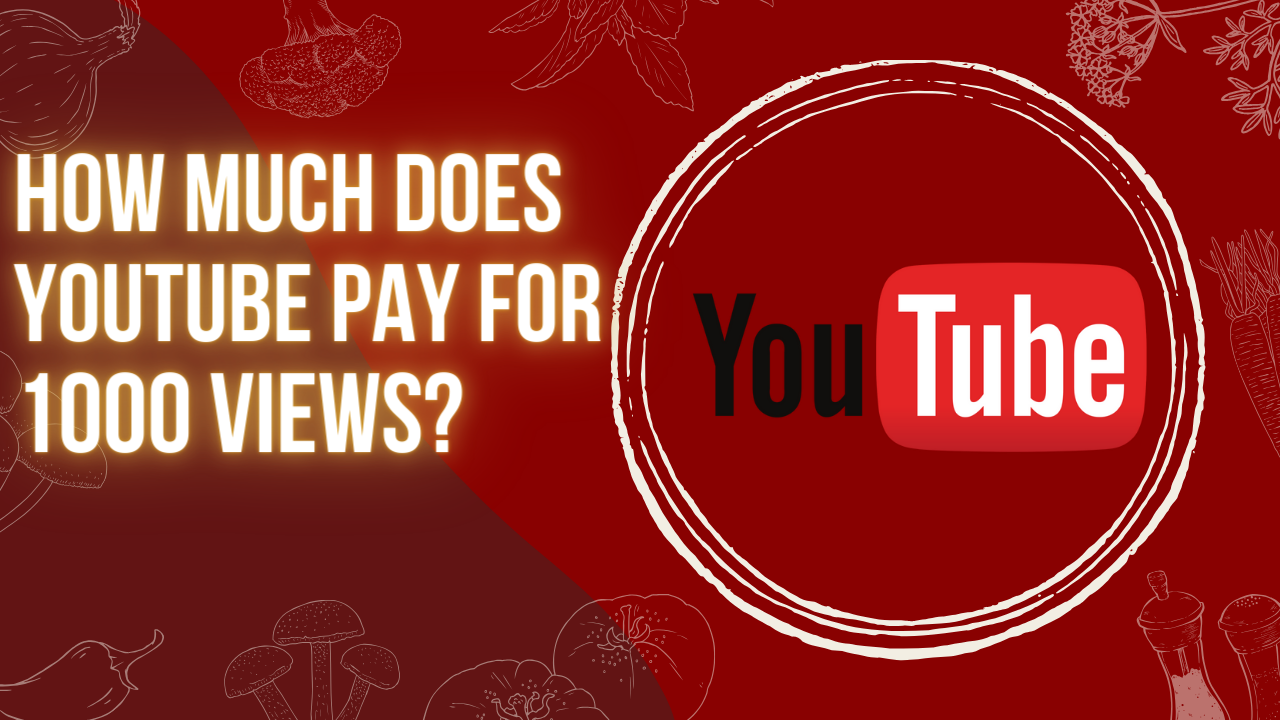How Much Does YouTube Pay for 1000 Views? Understanding YouTube Ad Revenue
YouTube has become a significant platform for content creators to share their videos and potentially earn money. One of the primary ways YouTubers make money is through ad revenue. But just how much does YouTube pay for 1000 views? In this article, we will delve into the world of YouTube ad revenue and provide some examples to give you a better understanding of how much YouTubers can earn.
Post Contents
Understanding YouTube Ad Revenue
YouTube ad revenue is generated when advertisers pay to display their ads on videos. Creators earn a portion of this revenue through the YouTube Partner Program (YPP). The specific amount paid for 1000 views varies widely and depends on several factors, including the type of ads, viewer engagement, and the niche of the content.
Factors Affecting YouTube Ad Revenue:
- Type of Ads: YouTube offers various types of ads, including skippable and non-skippable video ads, display ads, and more. Skippable ads are more viewer-friendly, but creators typically earn more from non-skippable ads since viewers must watch them in full.
- Ad Engagement: Creators earn more if viewers interact with the ads by clicking on them or engaging with them in some way. Higher engagement rates can lead to increased ad revenue.
- Content Niche: Different niches have varying levels of demand from advertisers. For example, channels related to technology or finance may attract higher-paying ads compared to gaming or vlogging channels.
- Viewer Location: The geographic location of your viewers can impact ad revenue. Advertisers may pay more to target viewers in countries with higher purchasing power.
Examples of YouTube Ad Revenue for 1000 Views
Let’s explore a few hypothetical examples to provide a sense of how much YouTube pays for 1000 views. Keep in mind that these are general estimates, and actual earnings can vary.
- Low Ad Revenue Scenario:
- Type of Ads: Skippable video ads
- Ad Engagement: Minimal engagement
- Content Niche: Personal vlog
- Viewer Location: Mixed international audience
- Estimated Earnings for 1000 Views: $0.50 – $2.00
- Moderate Ad Revenue Scenario:
-
- Type of Ads: Non-skippable video ads
- Ad Engagement: Some viewer interaction
- Content Niche: Tech tutorials
- Viewer Location: Primarily United States
- Estimated Earnings for 1000 Views: $2.00 – $5.00
-
- High Ad Revenue Scenario:
- Type of Ads: Premium display ads
- Ad Engagement: High click-through rates
- Content Niche: Personal finance advice
- Viewer Location: United States and other high-income countries
- Estimated Earnings for 1000 Views: $5.00 – $10.00 or more
It’s important to note that these estimates can fluctuate based on a variety of factors. Additionally, YouTube takes a 45% cut of ad revenue, meaning creators receive 55% of the total earnings.
Conclusion :
YouTube ad revenue for 1000 views can vary widely, from a few cents to several dollars, depending on the type of ads, viewer engagement, content niche, and viewer location. While these estimates provide a general idea of potential earnings, actual income can differ significantly. Successful YouTubers often combine ad revenue with other monetization methods, such as merchandise sales, sponsorships, and Patreon support, to build sustainable income streams from their content.
Certainly, here are some frequently asked questions (FAQs) related to YouTube ad revenue and earning money as a content creator on the platform:
1. How does YouTube pay creators for ad revenue?
- YouTube pays creators through the YouTube Partner Program (YPP). Creators earn a share of the revenue generated from ads displayed on their videos. Payments are typically made through Google AdSense.
2. How much money can I make on YouTube with 1000 views?
- The earnings for 1000 views can vary widely based on factors such as ad type, engagement, content niche, and viewer location. It can range from a few cents to several dollars.
3. Can I monetize my YouTube channel right away?
- No, you need to meet certain eligibility criteria to join the YouTube Partner Program (YPP). This includes having at least 1,000 subscribers and 4,000 watch hours in the past 12 months. Once you meet these requirements, you can apply for monetization.
4. What types of ads are available on YouTube?
- YouTube offers various ad formats, including skippable and non-skippable video ads, display ads, overlay ads, and sponsored cards. The type of ads displayed can impact your earnings.
5. Do I have control over the ads shown on my videos?
- You have limited control over the specific ads displayed. YouTube’s algorithm selects ads based on viewer data and content relevance. However, you can exclude specific categories of ads you don’t want to appear on your channel.
6. How often do YouTubers get paid?
- YouTube pays creators on a monthly basis, typically around the 21st of each month. However, you must reach the minimum payment threshold (usually $100) to receive a payout.
7. Are there other ways to make money on YouTube besides ad revenue?
- Yes, many YouTubers diversify their income through methods such as merchandise sales, channel memberships, sponsored content, affiliate marketing, and crowdfunding platforms like Patreon.
8. How do taxes work for YouTube earnings?
- Creators are responsible for paying taxes on their YouTube income. YouTube may provide tax forms, such as the 1099-MISC or 1099-K, depending on your location and earnings. It’s advisable to consult with a tax professional for guidance on tax obligations.
9. Can I use copyrighted music in my videos and still earn ad revenue?
- Using copyrighted music without proper licensing can result in demonetization or copyright claims. To avoid issues, use royalty-free music, licensed music, or music from YouTube’s Audio Library.
10. How can I increase my YouTube ad revenue? – To boost your ad revenue, focus on creating high-quality, engaging content, and growing your viewership. Encourage viewer interaction with ads, optimize your video titles and descriptions, and consider targeting higher-paying niches.
Remember that success on YouTube often requires consistent effort, creativity, and dedication. Earnings can vary widely, so it’s essential to have multiple income streams and not rely solely on ad revenue to sustain your YouTube channel.


